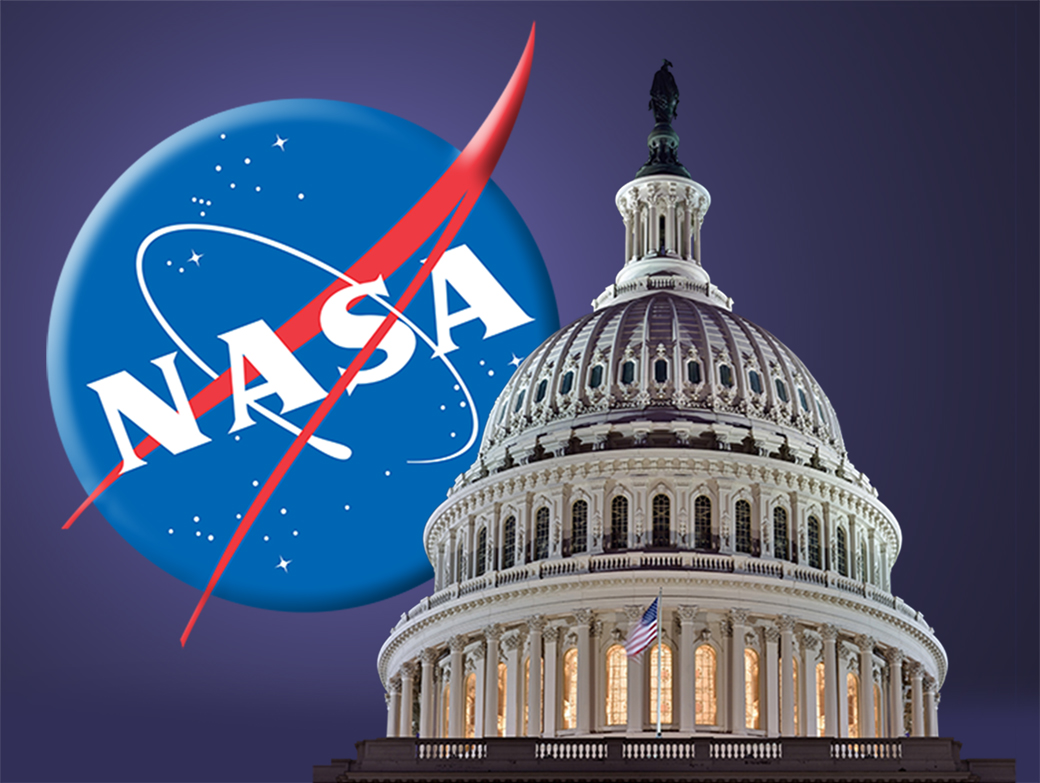TOKYO — A House spending bill would direct NASA to start work on an asteroid mission in partnership with industry as well as an orbital debris inspection mission.
The House Appropriations Committee released the report accompanying its commerce, justice and science (CJS) spending bill July 8, one day before a markup by the full committee. The CJS subcommittee favorably reported the underlying bill June 26 without discussing many details about its provisions.
The report includes additional details about spending for NASA programs as well as other provisions. Among those details are provisions calling on NASA to at least begin studies of missions not included in the agency’s request.
The report directs NASA to spend $5 million on “a plan for a public-private partnership reconnaissance mission to Apophis prior to its 2029 flyby.” Apophis is a near Earth asteroid that will make a close approach to Earth in April 2029. NASA plans to visit the asteroid after the flyby with the OSIRIS-APEX spacecraft, an extended mission for the OSIRIS-REx asteroid sample return mission.
Scientists, though, are interested in visiting the asteroid before the flyby to see if the close approach — closer to the Earth than the geostationary belt — alters the physical attributes of the asteroid in any way. A workshop in April in the Netherlands discussed several potential missions to visit Apophis in the months or weeks before the flyby, including concepts from companies such as Blue Origin and Exploration Labs. NASA officials, though, have noted that budget constraints made it difficult for it to commit to any mission beyond OSIRIS-APEX.
The House report states that appropriators are “concerned that NASA may miss a unique opportunity presented by the asteroid Apophis’s close approach to the Earth in 2029.” It suggests that the committee believes that such a mission could be carried out through partnerships with the private sector rather than as a traditional mission.
“The Committee emphasizes the importance of prioritizing resources effectively to ensure the success of this mission and encourages NASA to explore funding mechanisms that balance the need for scientific exploration with budgetary constraints, including new and innovative approaches that leverage the expertise of small companies, non-traditional partners, and private sector resource exploration potential benefits,” the report states.
In NASA’s space technology directorate, the report would allocate up to $25 million in the agency’s Small Satellite Technology program for what it calls an Orbital Debris Inspection Mission.
“The Committee supports a technology demonstration that tracks, characterizes, and inspects multiple objects in space,” the report states, but provides little other guidance for such a mission. NASA’s 2025 budget request included $41.2 million for space sustainability efforts in general “to better understand and mitigate the hazard of orbital debris,” the proposal stated, but did not explicitly include an inspection mission.
While space agencies in other countries are pursuing orbital debris technology demonstration missions, NASA has yet to seek funding for any missions to either characterize debris or test active debris removal technologies. The Japanese space agency JAXA, for example, has worked with Astroscale on the ADRAS-J inspection mission currently flying in the vicinity of an upper stage, as a precursor to a mission to remove that upper stage from orbit.
The report sidestepped some other key issues in the budget proposal. On Mars Sample Return, the committee endorsed NASA’s efforts to get input from industry on alternative ways of carrying out the mission. However, it stated it was concerned about “serious losses to NASA’s high-skilled workforce and leadership in areas critical to planetary sciences as well as future NASA missions,” and would instruct NASA to spend at least $650 million on MSR. NASA is requesting $200 million for the program while it examines how to redesign it.
The committee’s report also expressed support for NASA’s Chandra X-ray Observatory, whose budget NASA is considering reducing because of its relatively high operating costs. Astronomers have fought against any cuts, fearing they could lead to shutting down the 25-year-old spacecraft. The report, though, does not specify any funding levels for either Chandra or the Hubble Space Telescope, which is also facing potential budget cuts.
The report suggests the committee is interested in potential changes to NASA’s approach for its Commercial Low Earth Orbit Development, or CLD, program to stimulate development of commercial stations proposed by several companies. The report calls for NASA to provide a briefing on “its plans to achieve rapid and cost-effective CLD capabilities.”
That briefing would include an assessment of whether the program’s goals could be met with “a mix of different services from CLD contractor teams instead of requiring nearly identical services from providers” as well as “taking incremental steps toward more advanced CLD capabilities over time.”
